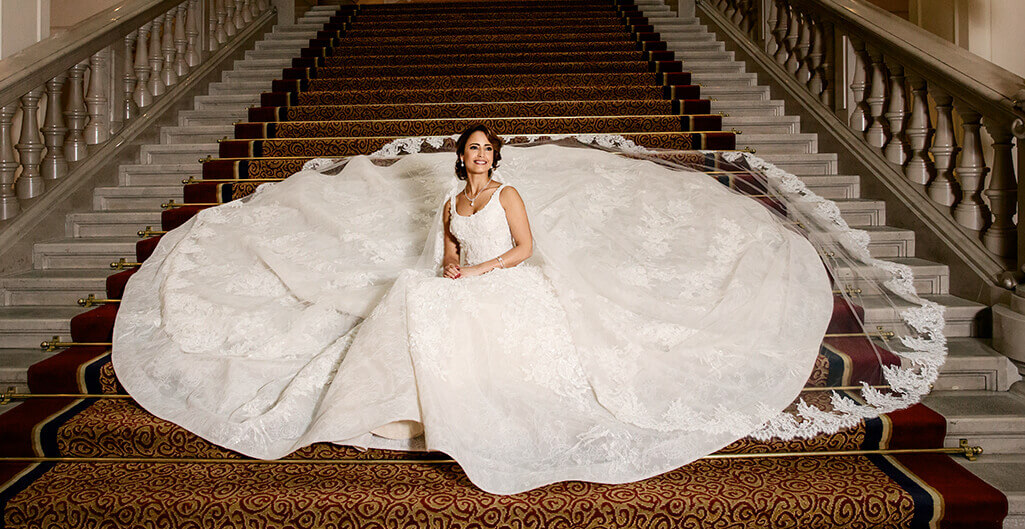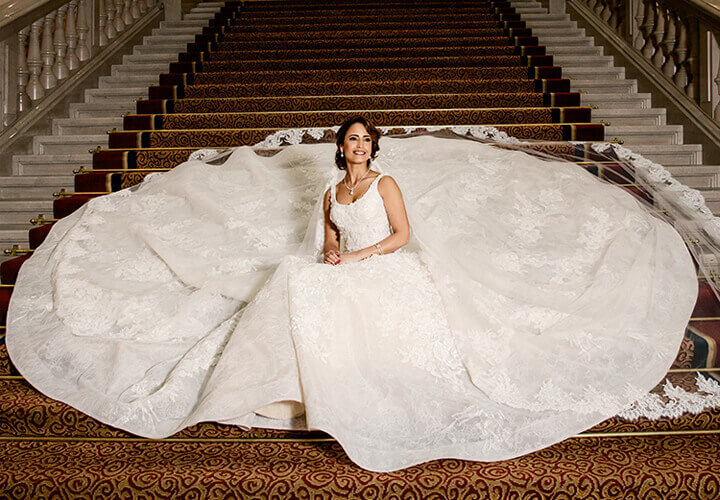Arabic Wedding

Arabic Wedding

Are you preparing to get married and want to get some interesting information in advance?
Here’s what happens at a traditional Arab wedding.
There are 22 Arab countries that span over the Middle East and Northern Africa. 22 countries? That’s a lot of people! Which means that’s a lot of weddings going on. So what does a traditional Arab wedding look like? What happens? Which family pays for what? How long do they last? We’ve got the answer to all your questions. Whether you were just invited to an Arab wedding or you one day hope to have your own, we’re here to break down the 3-day event that is an Arab wedding. Let’s get into it!
The Arab Wedding in Context
1. In order to understand an Arab wedding in its entirety, it is important to understand the process in context. Arab weddings are no different in that sense that they display love for one another, but there are several factors that set them apart from other cultural weddings. Across the 22 different Arab countries, there are different religions, regions and variations of the traditional Arab wedding. Some Arab cultures stick strictly to the traditional type of wedding while other Arab cultures have adapted some western wedding characteristics like cutting the cake and tossing of the bouquet.
2. Amongst all of the differences between the different types of Arab weddings, there are a few common aspects that can be found in almost all of them. A typical Arab wedding can be described as a loud, joyous and vibrantly colored event that draws tons of people. The foundation of the majority of Arab weddings is the marriage proposal, the engagement, henna night, the marriage contract and registration, the reception and the honeymoon.
The Proposal – Tulba
3. In the Arab culture, arranged marriages are still common and happen today. The Arab culture prohibits premarital sex and coed interaction. This usually makes it difficult for a man and woman to meet on their own terms and become engaged. This is the point of the process where the family, typically the man’s family, upon themselves to seek out a potential wife for their son. It is also possible for the man to suggest a woman to his parents. It is also worth mentioning that if a man and woman do meet beforehand, they could privately agree to be married and suggest it to both sets of parents.
4. Once the man’s family finds a suitable woman, they will then approach the woman’s family and ask for her hand in marriage. Once the two families have agreed that the match is suitable for both families, the woman’s family will host a reception at their house. This is the formal proposal that is also known as the “Tulba”. The point of this reception is to provide a setting for the two families to come together and for the man to formally ask the oldest male in the woman’s family, typically her father, for his blessing on their marriage.
Then Comes the Engagement – Khitbah
5. The engagement is probably the shortest and simplest part of the Arab wedding procession. Often referred to as the Khitbah (Arabic for courting), the engagement is most typically a gathering where the couple dresses in the same color and places rings on each other’s right-hand ring finger. If the couple is a part of the Muslim faith, during the engagement celebration the couple will read the first chapter of the Quran (also known as the surat Al-Fatiha). This is seven verses asking for Allah’s guidance. This is a small ceremony that also includes friends, family and a cutting of the cake. In addition to a cake being served, a sherbert or coffee option might be offered.
Henna Night – Radwa
6. The night before the wedding comes the Henna Night, commonly referred to as “Radwa”. This part of the wedding procession is held a day or two before the wedding ceremony. In cultures that honor more traditional wedding ceremonies, the Henna Night is the night where the two families get more of an opportunity to mingle and get to know one another. This is also a time where any last minute wedding venue decorations and necessities are taken care of. In a sense, this is similar to the western “rehearsal dinner”. During a traditional Henna Night, the man’s family will dance through the streets to the woman’s family’s house.
7. The man’s family will bring henna to mix with the woman’s family’s henna as a symbol of the two families becoming one. This is the ceremonial henna that the man and woman wear during the actual wedding ceremony. During a traditional henna night, the man also brings his soon-to-be-wife her “mahr” (typically a gold gift). After this gift is presented the two families will participate in traditional dances for the remainder of the night. In a more modern sense, the Henna Night can be compared to a bachelor/bachelorette night. The soon-to-be-wife gets together with her female friends and relatives and there’s music, food, and dancing.
8. A female henna artist also comes to the party to decorate the woman and her guests. Henna is used as a way to decorate the hands and feet in an ornate and extravagant way for the ceremony. The groom and his guests have a similar night with food and music. One of the groom’s close friends shaves his face to prepare him for the actual ceremony. Whether people in the Arab culture prefer traditional or modern Henna nights, one thing that carries across both preferences is the attire worn. The bride wears an embroidered dress called the itthyab. The groom wears an ankle length, a full-length garment called a thobe.
Making It Legal
9. After all of these steps, it’s finally time for the wedding! The registration and contract are the pre-wedding festivities. The marriage contract and registration is the very last step before the actual wedding ceremony. During this part of the wedding procession the wedding officiant, usually an iman or sheik, give a speech about the sacredness of marriage. During this time, all of the legal marriage documents are signed with witnesses. This can be held at either of the family’s houses, a church, a mosque or a courthouse depending on the group’s preference.
Welcome to Forever!
10. After all of that, it is finally time for the big ceremony! This is the climactic moment of the whole wedding procession and it definitely will show when the time rolls around. The intense and sometimes all-day preparation begins early in the morning. In today’s day and age, it is common for the bride to wear a Western-style white wedding dress. The dress has to be fully sleeved and contain an overall sense of modesty. The bride also wears a headdress that pairs well with her chosen dress. For the groom, there is the option of wearing a wedding thobe or a Western-style tuxedo if the couple is more liberal.
11. The groom and bride get ready without ever seeing each other until the actual ceremony begins. Once all of the preparation is done, the bride and groom will separately be escorted to the wedding venue.This involves being escorted as part of a caravan that includes a lot of honking of the cars, letting people know that a wedding is going on. Once the pair arrives, they are received by a “zaffa”. A “zaffa” is a human parade of dancers and musicians surrounding the couple with songs and encouragement. This isn’t a quick part of the procession. Quite the contrary! This can actually last a few hours. It is important to keep in mind that during this entire ordeal the goal is that the bride and groom are treated as the king and queen of the day.
12. This theme continues after the zaffa when the bride and groom sit on the dais in front of and above their guests like the king and queen. As soon as the bride and groom are seated on their dais, the guests drink to the couple’s health. They will then symbolically move from engagement to marriage as they switch their rings from their right ring finger to their left ring fingers. If the couple observes a more modern look at Arab culture, after they switch rings the party really starts and the rest of their lives has officially begun. The couple is married! The newlywed couple will share a dance and eventually, the rests of their guests will join in.
13. After hours of dancing, eating and celebrating the union of the two families, the couple will sometimes sneak out before the guests have left. This is the last part of the lengthy Arab wedding procession: the honeymoon! The honeymoon is a more recent addition to the Arab wedding. It wasn’t always included in an Arab wedding procession but in recent years has been included for couples that are able to handle the financial requirements that international travel demand.
Some Additional Notes
14.If you just got invited to your first Arab wedding, there are a few things you should be aware of and keep in mind. One of the core values of the Arab community is modesty. This will be clearly emulated in the formal attire both men and women are wearing. As mentioned earlier, male Arab guests usually wear a flowy, full-faced garment known as a Thobe. Female Arab guests wear modest, formal evening gowns with head coverings. If you’re attending an Arab wedding and you don’t identify as a part of the Arab community, you’ll want to honor and respect the couple getting married with modest attire.
Conclusion
Weddings are a great way to experience and interact with a different culture. If you get the opportunity to go to an Arab wedding, take advantage of the moment. The Arab culture is full of expression, symbolism, and family. When it comes to what type of wedding you’re attending, it depends on the couple and where their family finds their roots. If they’re in a more rural area, obviously the wedding will be more traditional. If the family is based in a more metropolitan area, it might be safe to say that the couple is more open to the modern type of wedding.
Get ready for great food, exciting music and a lot of dancing. These weddings, like most all weddings, are a ton of fun! If you find yourself planning a wedding within this culture and you’re stuck and looking for some inspiration, we’d love to hear from you.
Are you preparing to get married and want to get some interesting information in advance? Here’s what happens at a traditional Arab wedding.
There are 22 Arab countries that span over the Middle East and Northern Africa. 22 countries? That’s a ton of people! Which means that’s a ton of weddings going on. So what does a traditional Arab wedding look like? What happens? What family pays for what? How long do they last? We’ve got the answer to all your questions. Whether you were just invited to an Arab wedding or you one day hope to have your own, we’re here to break down the 3-day event that is an Arab wedding. Let’s get into it!